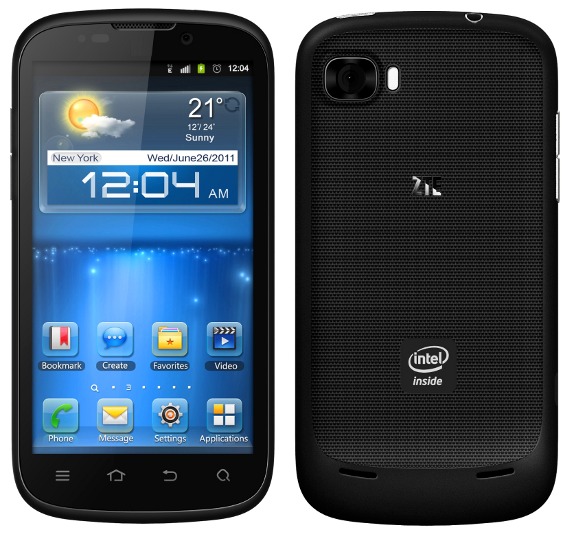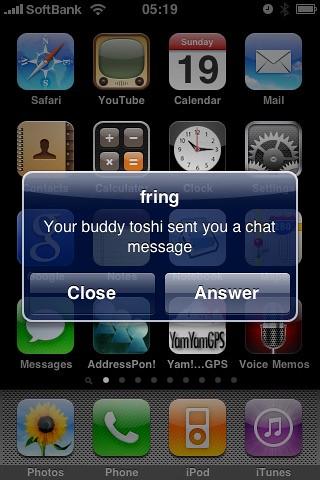#28 - Leaning anti-gravity method
IP Venture Journal
Keeping track of the latest, meanest, most nonsensical happenings in the technology patent landscape.
Friday, May 3, 2013
#27-28 - Apparatus for high-five, and leaning anti-gravity method
#27 - Apparatus for high-five
#28 - Leaning anti-gravity method
#28 - Leaning anti-gravity method
#28 - Method and means for creating anti-gravity illusion (silly patents week)
In my scout for silly patents, I found this 'method and means for creating anti-gravity illusion' using specially design shoes. How it works is that a person can lean forward more than usual, giving the illusion and appearance of defying gravity by leaning forward without falling using these special shoes. (See the full patent here). This is patent 452.
Watch him defy gravity by leaning forward! Let's ask ourselves: is this novel? Well... it's a bit hard to say. I would say 'yes' given that the 'lean forward' motion in general is a dance move popularized by Michael Jackson in his routines and music videos. It is difficult to achieve without being superbly skilled at dance, so this method through using shoes allows a person to 'cheat' without mastering the move. In that way, I would say it's novel. It's a way of using the move without being skilled. The patent was also issued in 1993, which is around the time that the move was used as well... so we can see that it's possibly directly influenced by the culture.
Obvious or not? I would say nonobvious, because the real obvious way to do it would be to define the practice and regimen to achieve this without the shoes. And is this a valid patent? Well, despite the silliness, I would say yes, given the fact that while it's silly, it does feature something new and useful for those who might be in the field of dance.
#27 - Apparatus for simulating a high five (Silly patents week)
Among the world of silly and obscure patents, there exists one that is an "apparatus for simulating a high five," comprising movable arm movement with specifics regarding the action that needs to be taken. This is US patent 330. (See the full patent here)
Now, this is truly a silly patent given that it is not novel. Surely in someone had some time had used this as a gesture prior to 1994, which was the year that the patent was issued. Obvious or not? I think pretty obvious. Most people have used high fives as a gesture of accomplishment or satisfaction for centuries, and the mechanics of the arm movements are nothing new and unnoticed. The only thing new about this invention is that it is mimicking a high five as opposed to being one from a physical human being. So we have yet to answer--is this a truly useful device?
Observe the silliness that it truly is. The only usefulness might be for someone who has their arm paralyzed... but you might wonder what else an arm whose mechanics functions for a high five can do. Whether or not we should consider this to be a valid patent or not... well, I can't imagine that anyone or anything could infringe upon this. So we'll see.
Friday, April 26, 2013
#25-26 - Google vs. Apple for push notification patent & Microsoft licenses to ZTE
#25 - Google vs. Apple push notification patent case stayed in German courts
#26 - Microsoft is patent-savvy and licenses to China's ZTE
#26 - Microsoft is patent-savvy and licenses to China's ZTE
Wednesday, April 24, 2013
#26 - Microsoft, the "Best Licensing Team," licenses to China's ZTE
Microsoft as of late has signed a license agreement to collect royalties from China's large handset maker, ZTE. ZTE also makes Android smartphones and tablets, so the patents it has licensed relate specifically to various aspects of Android smartphones. (Foss Patents has an interesting take on this case on the blog here.)
Microsoft has one again shown its savvy nature in the realm of intellectual property management. It turns out that around 80% of Android phones sold in the US have licensed Microsoft's patents. This is an overwhelming number, given that Android phone adoption is expected to reach one billion by the end of the year (this is a projected and quoted number by Eric Schmidt from Google). That totals around 800,000,000 phones in the U.S with a Microsoft smartphone patent in it. Microsoft's patent portfolio highly lucrative as a result of this.
Ever since Google acquired Motorola Mobility, the relationship between Google and Microsoft has been an interesting one. They have achieved a relationship, no doubt, and the success of one drives the success of the other. Such a symbiotic relationship reminds me of the ecosystem between Apple and Samsung. Clearly the patents have bolstered Android phones, and apparently the device makers find the patents crucial to the success of the phones. Google, on the other hand, has apparently tired to dissuade Android device makers from signing license agreements with Microsoft. (This sounds quite anti-competitive to me, but Google manages to get away with a massive amount of things.) They are mutually benefiting each other and yet in the courts they are vicious to be the victors. The solution? Certainly the licensing system is a step closer to it, but there's no 'real' punishment. Even Microsoft, who has been crowned as the "best licensing team" by a widely-read IP magazine, can't guard all corners.
 |
| One of ZTE's smartphone models |
Microsoft has one again shown its savvy nature in the realm of intellectual property management. It turns out that around 80% of Android phones sold in the US have licensed Microsoft's patents. This is an overwhelming number, given that Android phone adoption is expected to reach one billion by the end of the year (this is a projected and quoted number by Eric Schmidt from Google). That totals around 800,000,000 phones in the U.S with a Microsoft smartphone patent in it. Microsoft's patent portfolio highly lucrative as a result of this.
Ever since Google acquired Motorola Mobility, the relationship between Google and Microsoft has been an interesting one. They have achieved a relationship, no doubt, and the success of one drives the success of the other. Such a symbiotic relationship reminds me of the ecosystem between Apple and Samsung. Clearly the patents have bolstered Android phones, and apparently the device makers find the patents crucial to the success of the phones. Google, on the other hand, has apparently tired to dissuade Android device makers from signing license agreements with Microsoft. (This sounds quite anti-competitive to me, but Google manages to get away with a massive amount of things.) They are mutually benefiting each other and yet in the courts they are vicious to be the victors. The solution? Certainly the licensing system is a step closer to it, but there's no 'real' punishment. Even Microsoft, who has been crowned as the "best licensing team" by a widely-read IP magazine, can't guard all corners.
#25 - Google v. Apple case over push notification patent in German courts
The proceedings in the German appeals court has been temporarily halted for a case between Google and Apple over the push notification patent. (See the full story on Foss Patents here.)
The history of this patent in courts has been long-winded. A real milestone was back at the end of 2012, during which a court in England ruled the invalidation of this particular patent. From there, this patent has been in contention, and this patent asserted by Google's Motorola Mobility arm was used to force Apple to turn off its iCloud mail push notifications. The reason for the invalidation of the patent in the UK primarily surrounded the lack of novelty and obviousness. Now that it's being investigated in German courts, and the German courts and headed toward the same direction as the precedent rulings. It's very likely that the ruling is invalid, but for now, both parties have agreed to a stay (I can't imagine why Google would agree to this, but it looks like they have.)
At one point, Microsoft was also involved with using the push patent notification patent. Even in this case, Google was found to not be entitled to an injunction against Microsoft over the push notification patent given that Google owed Microsoft a license under the previous ActiveSync license agreement they both undertook together. The best Google could have done in this case would be to claim past infringement for the periods prior to their acquisition of Motorola Mobility.
This particular case, for me, brought up some thoughts regarding the enforcement of patents. Other than licensing, joint ownership, and outright purchasing the patents, it's difficult to really effectively enforce and assert IP. Right now, the alternative to the aforementioned means is litigation, which is why we see six-digit and seven-digit dollar sized litigation cases that appear to be financially draining.
 |
| Push notifications pop-up on screen while you're working to let you know that something new has happened. |
The history of this patent in courts has been long-winded. A real milestone was back at the end of 2012, during which a court in England ruled the invalidation of this particular patent. From there, this patent has been in contention, and this patent asserted by Google's Motorola Mobility arm was used to force Apple to turn off its iCloud mail push notifications. The reason for the invalidation of the patent in the UK primarily surrounded the lack of novelty and obviousness. Now that it's being investigated in German courts, and the German courts and headed toward the same direction as the precedent rulings. It's very likely that the ruling is invalid, but for now, both parties have agreed to a stay (I can't imagine why Google would agree to this, but it looks like they have.)
At one point, Microsoft was also involved with using the push patent notification patent. Even in this case, Google was found to not be entitled to an injunction against Microsoft over the push notification patent given that Google owed Microsoft a license under the previous ActiveSync license agreement they both undertook together. The best Google could have done in this case would be to claim past infringement for the periods prior to their acquisition of Motorola Mobility.
This particular case, for me, brought up some thoughts regarding the enforcement of patents. Other than licensing, joint ownership, and outright purchasing the patents, it's difficult to really effectively enforce and assert IP. Right now, the alternative to the aforementioned means is litigation, which is why we see six-digit and seven-digit dollar sized litigation cases that appear to be financially draining.
Friday, April 19, 2013
#23-24 Videos: Google called out on 'search method' and Patent maintenance fees rise
#23 - Google is called out on search methodology by Apple
#24 - USPTO raises patent maintenance fees
Subscribe to:
Comments (Atom)

